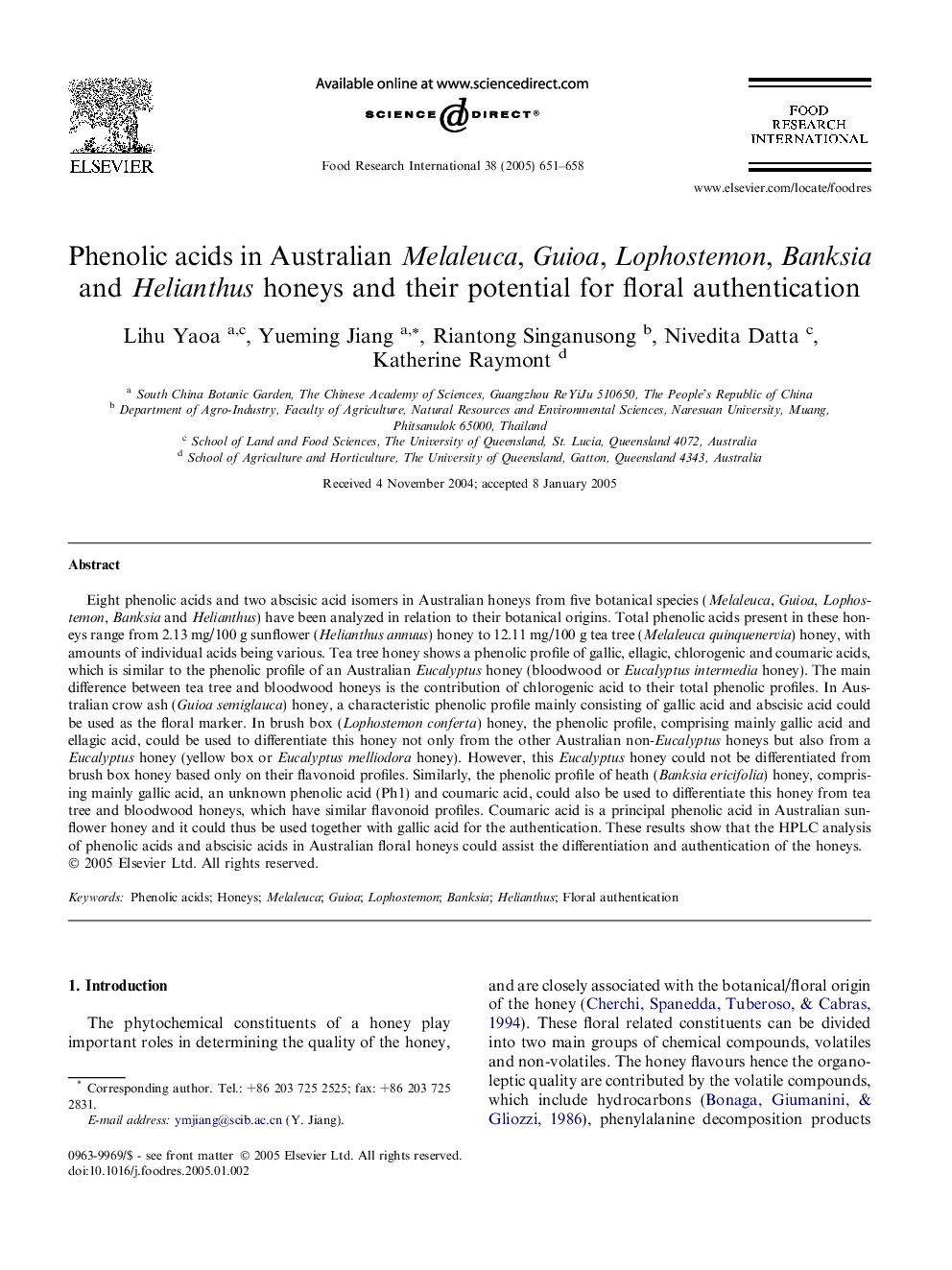| کد مقاله | کد نشریه | سال انتشار | مقاله انگلیسی | نسخه تمام متن |
|---|---|---|---|---|
| 9487530 | 1330759 | 2005 | 8 صفحه PDF | دانلود رایگان |
عنوان انگلیسی مقاله ISI
Phenolic acids in Australian Melaleuca, Guioa, Lophostemon, Banksia and Helianthus honeys and their potential for floral authentication
دانلود مقاله + سفارش ترجمه
دانلود مقاله ISI انگلیسی
رایگان برای ایرانیان
موضوعات مرتبط
علوم زیستی و بیوفناوری
علوم کشاورزی و بیولوژیک
دانش تغذیه
پیش نمایش صفحه اول مقاله

چکیده انگلیسی
Eight phenolic acids and two abscisic acid isomers in Australian honeys from five botanical species (Melaleuca, Guioa, Lophostemon, Banksia and Helianthus) have been analyzed in relation to their botanical origins. Total phenolic acids present in these honeys range from 2.13Â mg/100Â g sunflower (Helianthus annuus) honey to 12.11Â mg/100Â g tea tree (Melaleuca quinquenervia) honey, with amounts of individual acids being various. Tea tree honey shows a phenolic profile of gallic, ellagic, chlorogenic and coumaric acids, which is similar to the phenolic profile of an Australian Eucalyptus honey (bloodwood or Eucalyptus intermedia honey). The main difference between tea tree and bloodwood honeys is the contribution of chlorogenic acid to their total phenolic profiles. In Australian crow ash (Guioa semiglauca) honey, a characteristic phenolic profile mainly consisting of gallic acid and abscisic acid could be used as the floral marker. In brush box (Lophostemon conferta) honey, the phenolic profile, comprising mainly gallic acid and ellagic acid, could be used to differentiate this honey not only from the other Australian non-Eucalyptus honeys but also from a Eucalyptus honey (yellow box or Eucalyptus melliodora honey). However, this Eucalyptus honey could not be differentiated from brush box honey based only on their flavonoid profiles. Similarly, the phenolic profile of heath (Banksia ericifolia) honey, comprising mainly gallic acid, an unknown phenolic acid (Ph1) and coumaric acid, could also be used to differentiate this honey from tea tree and bloodwood honeys, which have similar flavonoid profiles. Coumaric acid is a principal phenolic acid in Australian sunflower honey and it could thus be used together with gallic acid for the authentication. These results show that the HPLC analysis of phenolic acids and abscisic acids in Australian floral honeys could assist the differentiation and authentication of the honeys.
ناشر
Database: Elsevier - ScienceDirect (ساینس دایرکت)
Journal: Food Research International - Volume 38, Issue 6, July 2005, Pages 651-658
Journal: Food Research International - Volume 38, Issue 6, July 2005, Pages 651-658
نویسندگان
Lihu Yaoa, Yueming Jiang, Riantong Singanusong, Nivedita Datta, Katherine Raymont,